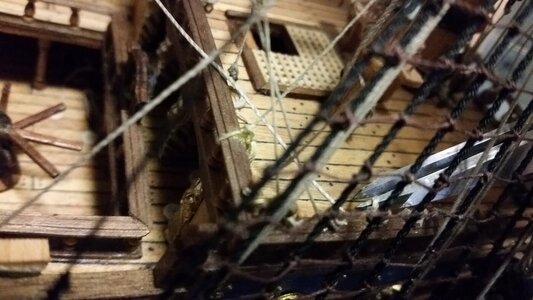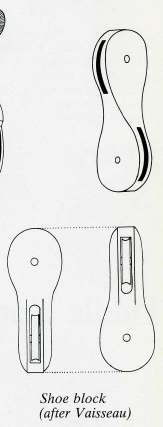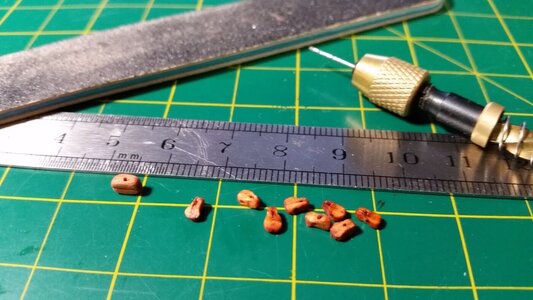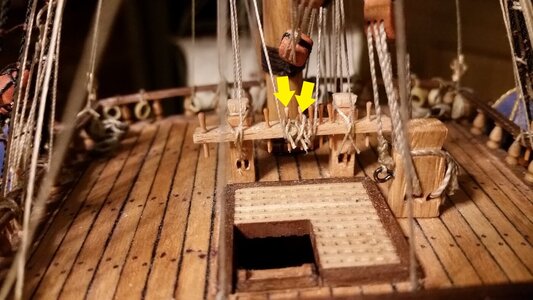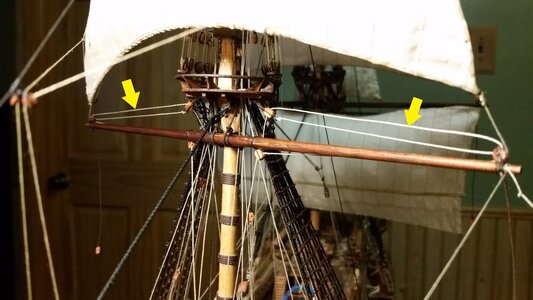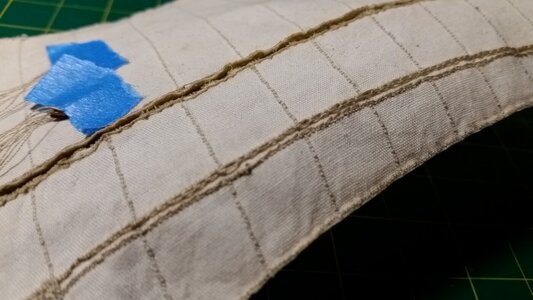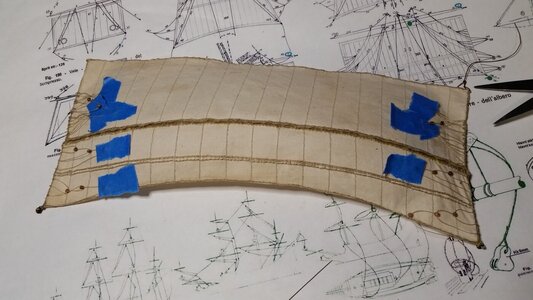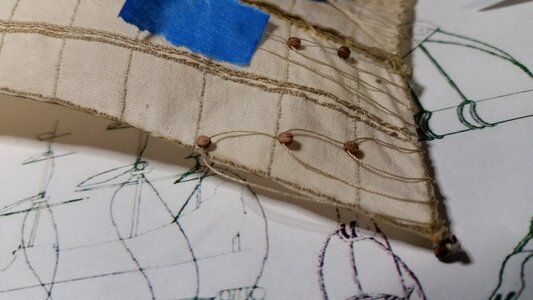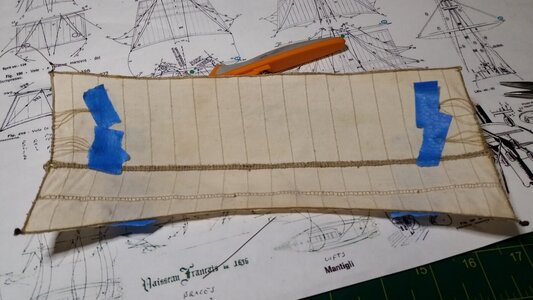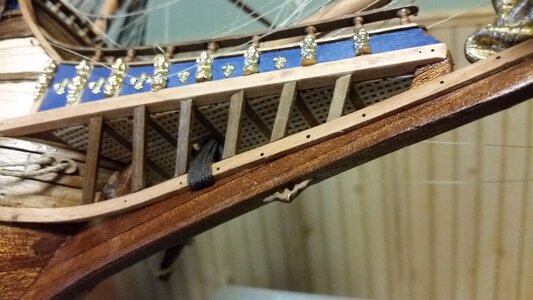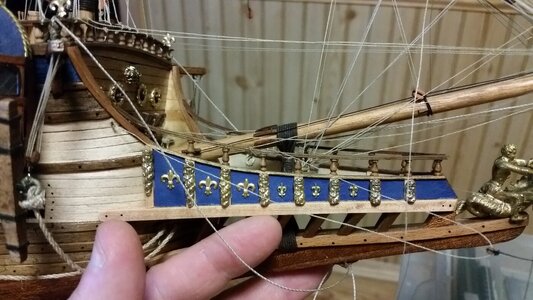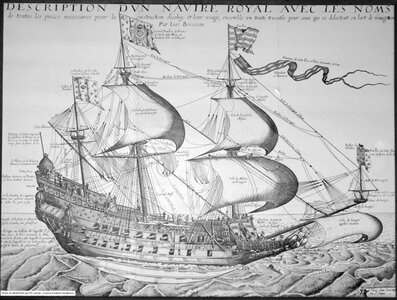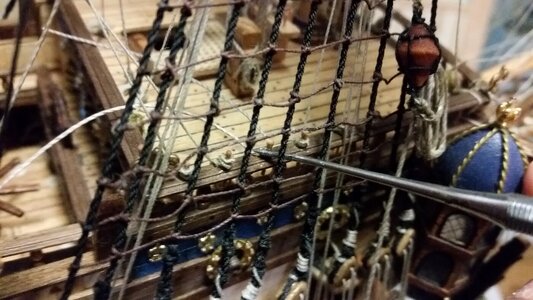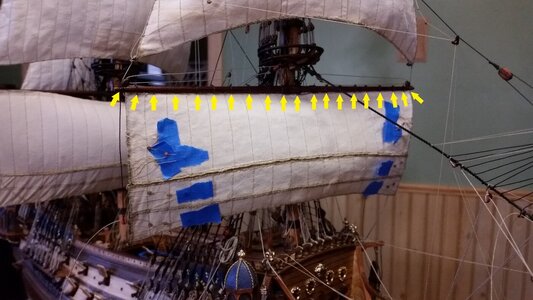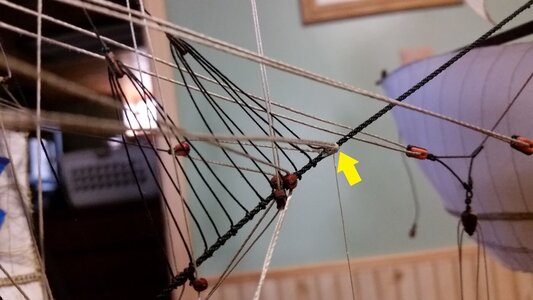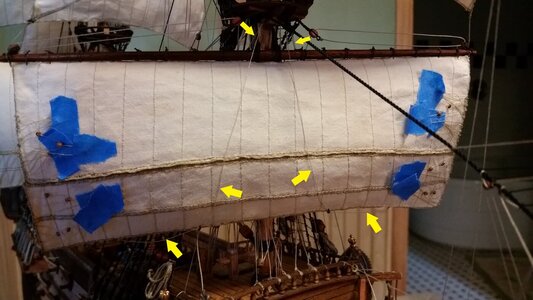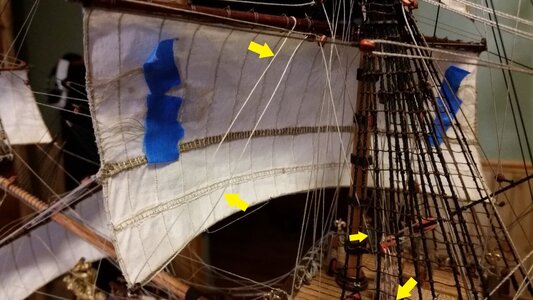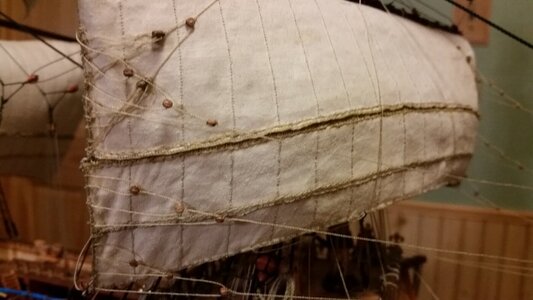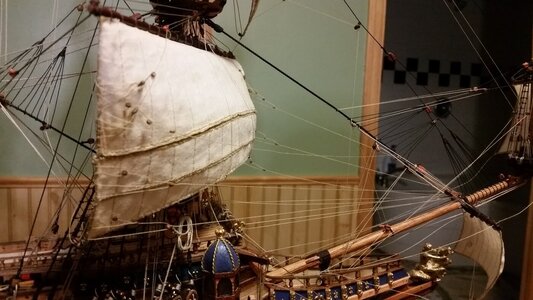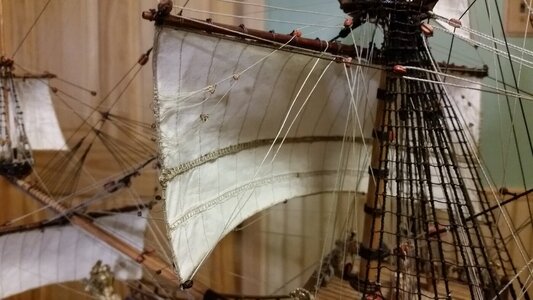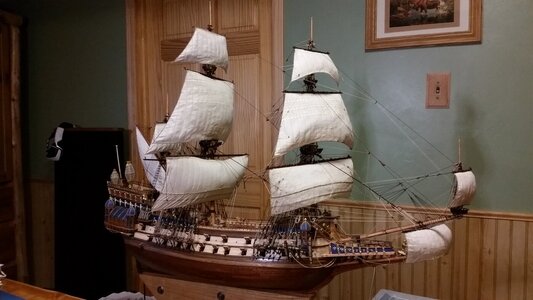Here is a quick step-by-step on how to tie a line to a belaying pin located in a rather inaccessible area behind the shrouds. In this case, the starboard fore course brace line, tied to the third pin on the rail from the rear end of the forecastle. In a few cases, I can use my fingers to hold line tension while applying some glue between steps to hold the line in place as it is belayed the pin.
Step 1 - Cut a length of line about 15 cm longer than you estimate you'll need. Line is cheap. Take one end of the line, and pinch a loop. Fish it under the the rail and hook it around the lower pin.
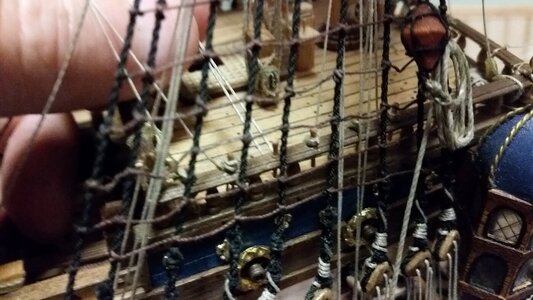
Step 2 - While holding the loop in place with slight tension with one hand, use a dental pick in your other hand to apply some CA glue to the bottom pin to hold to cement the line there. Below you can see that the line stays in place after the CA dries and you let go of it.
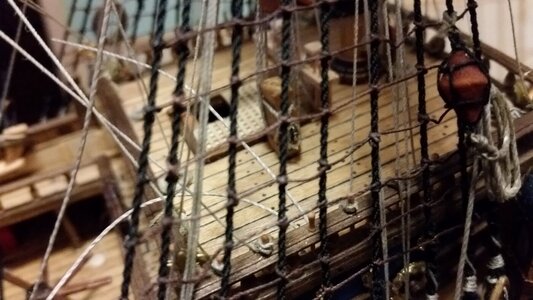
The pattern the line will follow will look like this, as viewed from the forecastle deck.
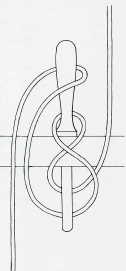
Step 3 - You will be belaying the short length of line to the pin. The long length will be routed up through block and tied to the yard later, so it lays on the forecastle for now. Using needle nose pliers in one hand to hold the end of the line, hook the line with a hooked dental pick in the other hand and pass the line over and around the top pin. Below, a straight pick was used to hold the line in place with my right hand, allowing me to remove the pliers and grab the CA glue bottle.
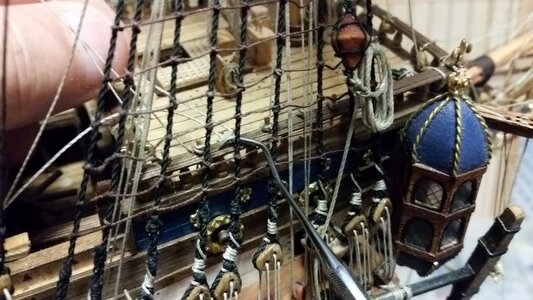
Step 4 - After grabbing and holding the loose end of the line with the pliers again, I apply some CA glue to the upper pin with the dental pick. Once the glue takes hold, I can let go wit the pliers again, and use that free hand to take the picture below.
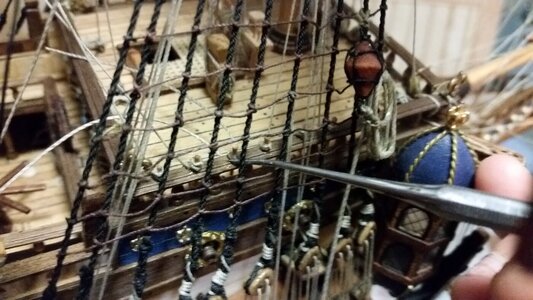
Step 5 - While holding the end of the line with pliers, draw the line downward, and with your other hand, use the hook to draw a loop once again under and around the bottom pin, and put some tension with the plier to hold the line in place while you extract the hook.
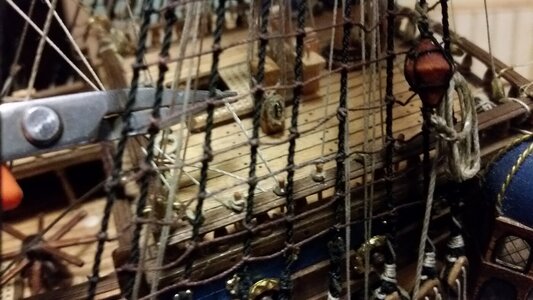
Step 6 - Apply CA glue again to the bottom pin and the line there. When it is dry, you can let go of the pliers holding the tension.
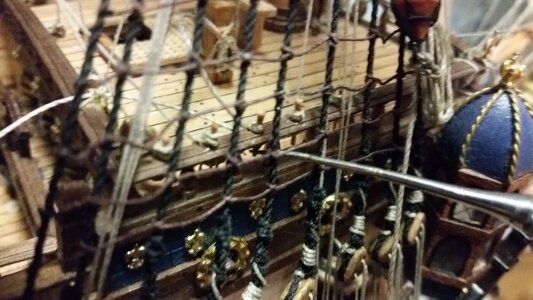
Step 7 - While holding the end of the line with pliers, snag the standing part with a dental hook and rotate the hook to form a loop, or bight. This bight, when slipped over the top pin, should be oriented such that the bitter end lies beneath the loop in the line, thus trapping it. Getting the correct direction to spin the hook and form the bight takes a bit of practice. If you accidentally release the line, the entire line you've tied thus far will unravel, because you glued all the passes around the pin, so there's no need to panic.
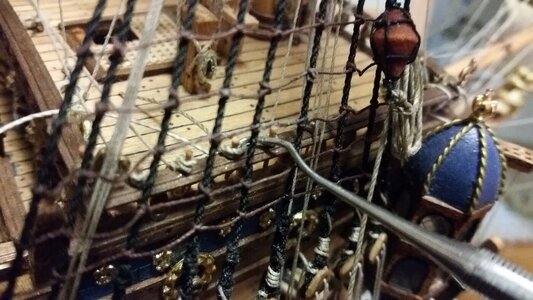
Step 8 - Tug the loose end of the line downward toward the deck to tighten the last bight on the belaying pin, but be gentle.
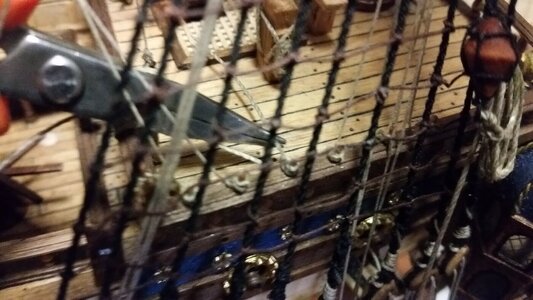
Step 9 - Apply a drop of PVA glue to prevent it from untying itself. Remove excess glue and allow to dry. The line is now secured to the belaying pin.
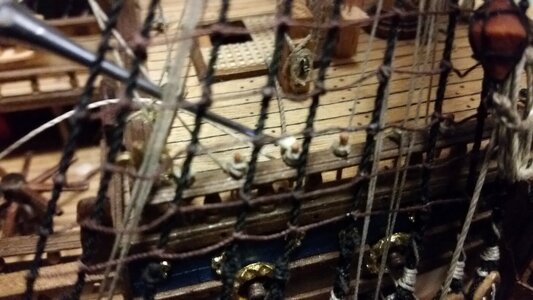
Step 10 - If you don't have these by now, buy them. These are Fisker's scissors. They are small, razor sharp, and the tips can cut line so close a knot that you cannot find the bitter end afterward.
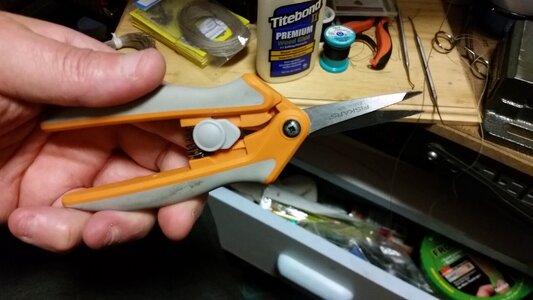
Step 11 - This is where you cut off the excess line. Tip: ALWAYS insert the scissors through previous rigging with the blades CLOSED until the tips are at the location where you wish to make your cut. Otherwise, the simple act of inserting the scissors will easily slice through rigging lined. So, bearing that in minded grab the end of the excess line with pliers, and insert the scissors, and open them a tiny bit, just enough to cut the excess line off.
